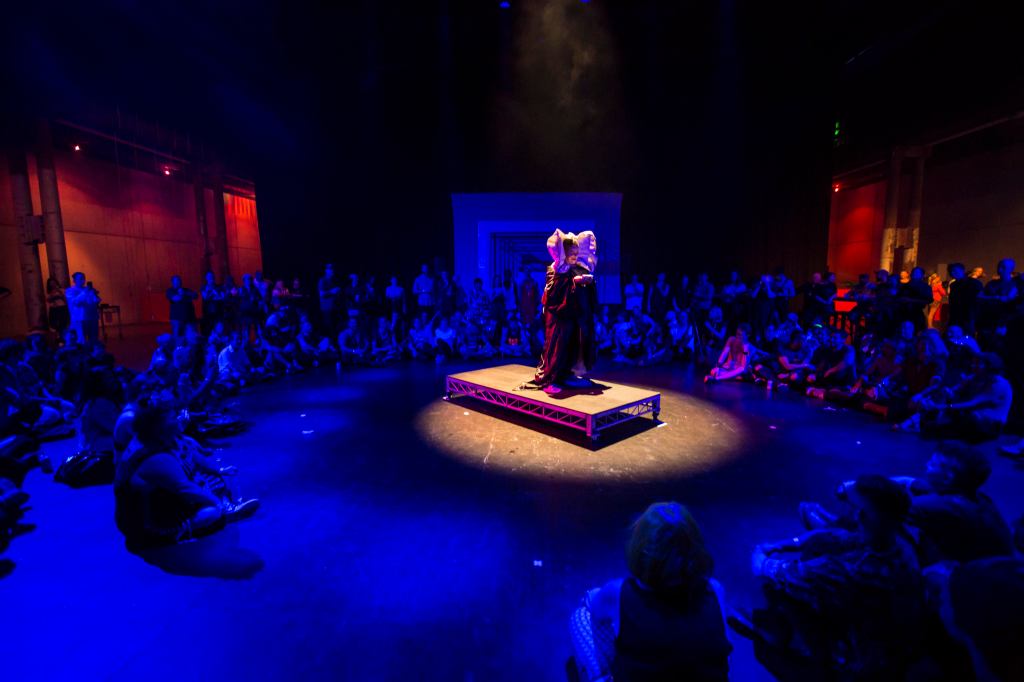We currently have a unique opportunity to influence policy change and improve the fundamental conditions of work and practice in the arts. The development of a National Cultural Policy in wide consultation with the sector has the potential to reinvest in strategies that promote a robust arts ecology, and support the careers of artists across the country from a range of perspectives and lived experiences. It can help the arts reach more audiences and give more people great experiences making art themselves. This Policy will be Australia’s first in a decade.
It is up to us to ensure that the whole of the arts ecology is heard and that our needs are well represented in cultural policy. The National Association for the Visual Arts (NAVA) and Theatre Network Australia (TNA) encourage all artists, arts workers, organisations and networks to make a submission if you can. If the government sees high levels of engagement, they are more likely to invest in the recommendations and ideas that work for us.
Submissions can be simple. You don’t need to articulate the value of the arts, or the economic benefits. This consultation is simply asking for what we need moving forward.
What would you like to see in an arts policy? An industrial Award rate for the visual arts and crafts? A comprehensive Young People and the Arts Framework? Recognition of art as a profession by Centrelink? Support for First Nations-led education, training, employment and representation in leadership roles and middle-tier jobs?
The five proposed pillars of the new Policy are:
- First Nations: recognising and respecting the crucial place of these stories at the centre of our arts and culture.
- A place for every story: reflecting the diversity of our stories and the contribution of all Australians as the creators of culture.
- The centrality of the artist: supporting the artist as worker and celebrating their role as the creators of culture.
- Strong institutions: providing support across the spectrum of institutions which sustain our arts and culture.
- Reaching the audience: ensuring our stories reach the right people at home and abroad.
How to add your voice
Make a submission by either filling in the National Cultural Policy submission template or just write your own document. Go to the website and follow the link to the form and upload your submission as an attachment.
The submission template is designed to be a helpful guide, but it is not necessary to fill in every section. While it is not essential that you use the submission template at all, aligning your ideas or recommendations with one or more of the above five pillars will make it easier for those reading the submissions to group together the good ideas.
You can write as much or as little as you want and in whatever format you like. The consultation will also accept non-written submissions in alternative formats. The Office for the Arts has suggested a limit of three pages or five minutes for video/audio submissions emailed through to culturalpolicy@arts.gov.au.
How to make a submission using the template
- Download the template from the Australian Government website.
- Do some background reading if you want. The Australia Council has published a framing document and the 2013 National Cultural Policy is also available on the consultation page. NAVA has published notes from our recent workshops with the visual arts and craft sector. TNA has posted our draft submission on our website. You can also read any of the submissions that have already been published.
- We recommend that you add a sentence at the top of your document that says you support a National Cultural Policy. Of course that is implicit, but making it explicit will help demonstrate broad support.
- Fill in the boxes you want to respond to. The main sections of the template are as follows:
- What challenges and opportunities do you see in the pillar or pillars most relevant to you?
- Please tell us how each of the five pillars are important to you and your practice and why.
- Are there any other things that you would like to see in a National Cultural Policy?
Challenges and opportunities is a good place for listing specific needs that you have as an artist or arts worker. Some of the things we have heard from our members includes the need for affordable live/work spaces, fair pay and greater security as a freelance artist, and the need for investment in First Nations-led education, training, mentorship and skills development programs to support First Nations employment and representation in middle-tier jobs, leadership roles, boards, and Aboriginal advisory groups.
Opportunities could be new ways of doing things that emerged for you from the pandemic. For example, the urge for schools to get out and about and give students in-person interaction with art and artists is huge but this requires resources for both schools and arts organisations, particularly local galleries and local arts companies.
While funding is obviously something we all need, try to keep it specific. For example, we have heard urgent calls for more multi-year grant programs for independent artists, fellowships, and project grants of scale.
Read: Writing your National Cultural Policy submission
The section on how the pillars are important to you can be where you include case studies. Summarise a project you think was a particular success. Or include a failure story and what you learnt from it and how it informed other work or projects. Real examples are much more compelling than generalised statements. Do make sure the story is yours to tell.
The section asking for other things you would like to see in a National Cultural Policy can be where you put other ideas that don’t fit in the other sections. For example, TNA supports the inclusion of a Young People and Culture Framework in the policy. NAVA is calling for industrial reform that establishes an Award rate for the visual arts and crafts.
We both believe that the Policy should guide the more comprehensive development of a 10-year National Cultural Plan which will work across government portfolios to leverage and invest in the civic benefits of arts and cultural programs.
It’s time again for us to come out in numbers. Let’s use this momentum for change. Share our stories, ideas and make recommendations.





